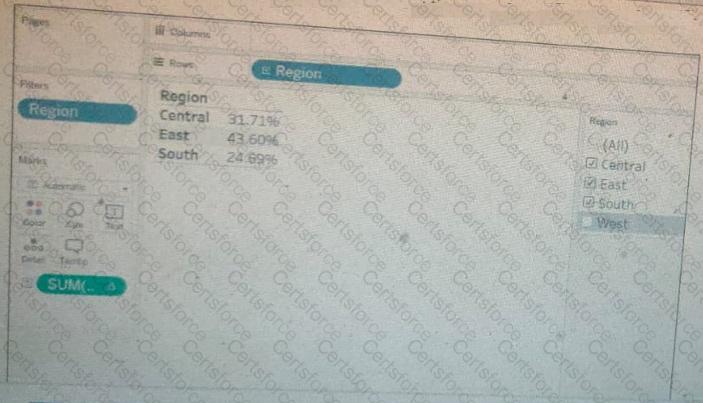The problem:
The client wants:
Percent of total sales for each region compared to ALL regions,
even when Region is filtered.
However, the calculation currently behaves like a table calculation:
SUM([Sales]) / TOTAL(SUM([Sales]))
This recalculates the total after Region filters are applied, so removing a region changes the denominator.
Tableau Documentation — How to prevent recalculation:
To keep percent-of-total unchanged when filtering, Tableau’s recommended method is to use FIXED LOD expressions to lock the granularity.
Two values must be fixed:
Numerator: Sales for that specific region{ FIXED [Region] : SUM([Sales]) }
Denominator: Total sales across all regions, independent of filters{ FIXED : SUM([Sales]) }(FIXED with no dimension = entire data set)
Then compute the percentage:
{ FIXED [Region] : SUM([Sales]) } / { FIXED : SUM([Sales]) }
This ensures:
The region sales remain accurate.
The overall total remains constant, even if filters remove regions.
Region filtering no longer recalculates percent-of-total.
Why the other options are incorrect:
A. {FIXED [Region]: SUM([Sales])} / SUM([Sales])
The denominator is still affected by filters → recalculates % of total.
B. {FIXED [Region]: SUM([Sales])} / { [Sales] }
{[Sales]} is not valid syntax and does not fix granularity.
D. {FIXED [Region]: SUM([Sales])}
This gives only the numerator — no percent-of-total calculation.
The only correct LOD solution is option C.
Tableau LOD Expression Guide: FIXED for filter-independent calculations.
Tableau Percent-of-Total Best Practices: use FIXED LOD to avoid recalculation when filters change.
Order of Operations: FIXED LODs occur before dimension filters, keeping totals stable.


Submit